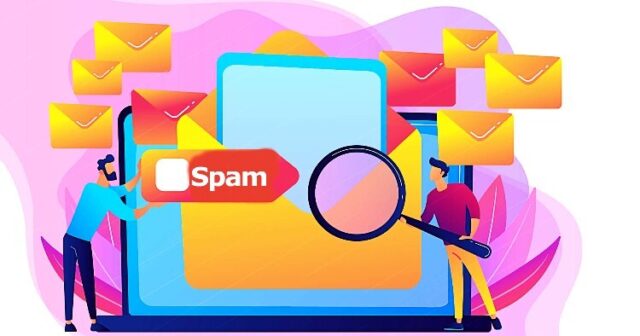In the world of email marketing, reaching your audience’s inbox is crucial for engagement and conversions. However, with the rise of spam filters, getting your emails delivered can be a significant challenge. Spam filters are designed to protect users from unsolicited and potentially harmful emails, but they can also inadvertently block legitimate marketing communications. To ensure your emails land where they belong—in the inbox—here are effective strategies to avoid spam filters.

Table of Contents
Toggle1. Build a Clean Email List
The foundation of successful email marketing begins with a clean and engaged email list. Building your list organically will help you avoid spam filters and improve your overall deliverability.
Best Practices:
- Use Double Opt-In: Implement a double opt-in process where subscribers confirm their email addresses. This helps ensure that the people on your list genuinely want to receive your emails.
- Regularly Clean Your List: Periodically remove inactive subscribers or those who haven’t engaged with your emails in a while. Keeping your list clean will improve your sender reputation and reduce bounce rates.
2. Craft a Compelling Subject Line
Your email’s subject line is the first thing recipients see, and it plays a significant role in whether your email gets opened or flagged as spam. Avoid using spammy words and excessive punctuation, which can trigger spam filters.
Tips for Effective Subject Lines:
- Be Clear and Relevant: Use straightforward language that reflects the content of the email. Avoid using all caps, excessive exclamation points, or phrases like “Free” or “Guaranteed.”
- Personalize When Possible: Incorporating the recipient’s name or relevant details can enhance engagement and reduce the likelihood of being marked as spam.
3. Use a Professional Email Service Provider (ESP)
Choosing the right Email Service Provider (ESP) can significantly affect your email deliverability. A reputable ESP often has established relationships with ISPs and employs best practices to help your emails land in inboxes.
Key Features to Look For:
- Good Sender Reputation: Research the ESP’s reputation for deliverability and compliance with spam regulations.
- Authentication Protocols: Ensure your ESP supports email authentication protocols like SPF, DKIM, and DMARC, which can help verify your emails’ legitimacy.
4. Authenticate Your Emails
Email authentication is essential for proving your legitimacy as a sender and ensuring that your emails are not flagged as spam.
Important Authentication Protocols:
- SPF (Sender Policy Framework): SPF allows the sender to specify which IP addresses are permitted to send emails on their behalf. Setting up an SPF record helps prevent spoofing.
- DKIM (DomainKeys Identified Mail): DKIM adds a digital signature to your emails, confirming that they haven’t been altered during transmission and verifying that the sender is authorized.
- DMARC (Domain-based Message Authentication, Reporting & Conformance): DMARC builds on SPF and DKIM, providing instructions to email servers on how to handle emails that fail authentication checks.
5. Optimize Your Email Content
The content of your emails plays a critical role in spam filtering. Avoid using language and formatting that might trigger spam filters.
Content Optimization Tips:
- Avoid Spammy Language: Steer clear of excessive promotional language, such as “Act Now!” or “You’ve Won!” Instead, use a conversational tone.
- Limit Links and Images: Emails that contain too many links or images can be flagged as spam. Aim for a good balance between text and visuals, and use alt text for images.
- Include a Plain Text Version: Some spam filters favor emails with both HTML and plain text versions. Including a plain text version ensures better deliverability.
6. Ensure Compliance with Regulations
Compliance with regulations such as the CAN-SPAM Act and GDPR is crucial for avoiding spam filters. Non-compliance can result in penalties and increased scrutiny from spam filters.
Compliance Guidelines:
- Provide a Clear Unsubscribe Option: Make it easy for subscribers to opt-out of your emails. A visible unsubscribe link helps maintain trust and reduces spam complaints.
- Honor Unsubscribe Requests Promptly: Ensure that unsubscribe requests are processed quickly and efficiently.
7. Monitor Your Sender Reputation
Your sender reputation significantly influences your email deliverability. Regularly monitoring your reputation can help you identify potential issues before they escalate.
Tools for Monitoring Reputation:
- Sender Score: Check your Sender Score, which ranges from 0 to 100, to gauge your email reputation based on sender behavior and recipient engagement.
- Feedback Loops: Sign up for feedback loops offered by ISPs to receive notifications when recipients mark your emails as spam. This can help you identify areas for improvement.
8. Test and Analyze Your Emails
Testing your emails before sending them can help identify potential issues that might trigger spam filters.
Testing Strategies:
- Spam Checkers: Use spam checker tools to analyze your emails for common spam triggers before you send them.
- A/B Testing: Conduct A/B tests to determine which subject lines, content, and formats perform best with your audience and have the highest deliverability rates.
Conclusion
Avoiding spam filters in email marketing is essential for ensuring your messages reach your audience. By following best practices, optimizing your content, and maintaining compliance with regulations, you can enhance your email deliverability and improve engagement. Remember, the key to successful email marketing lies in building genuine relationships with your subscribers. Focus on providing value, respecting their preferences, and continuously refining your approach to create a successful email marketing strategy that stands out in the crowded inbox.


No responses yet